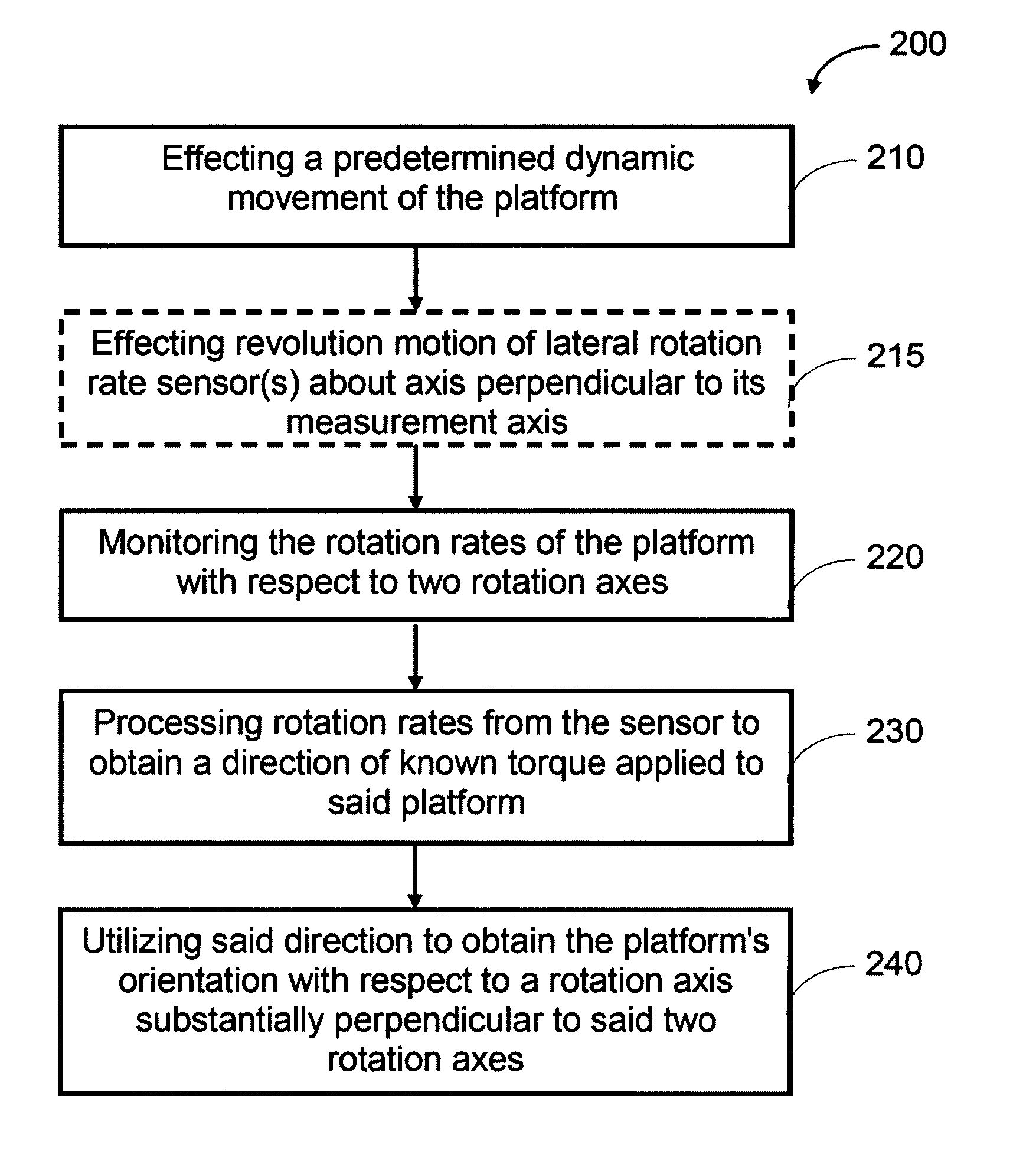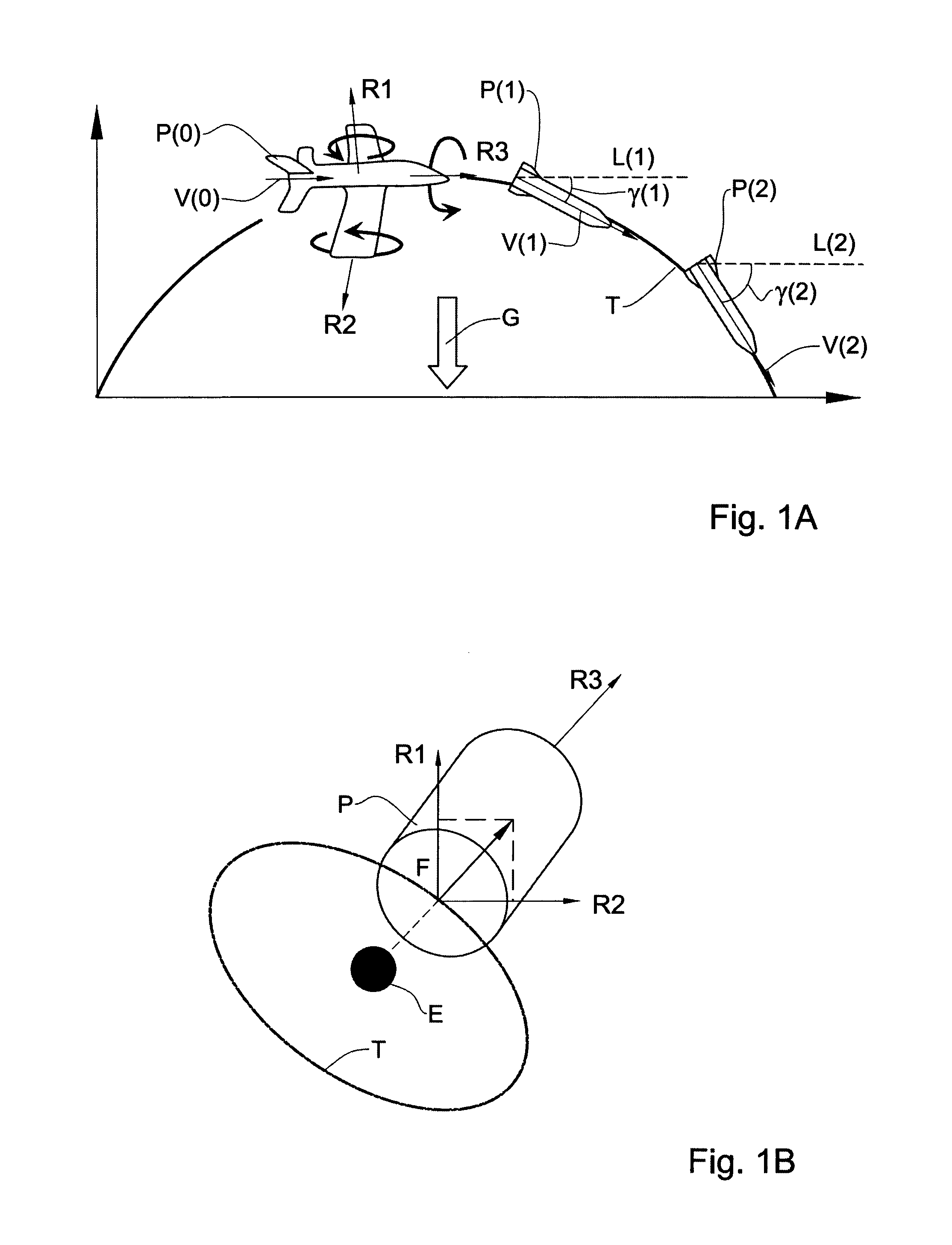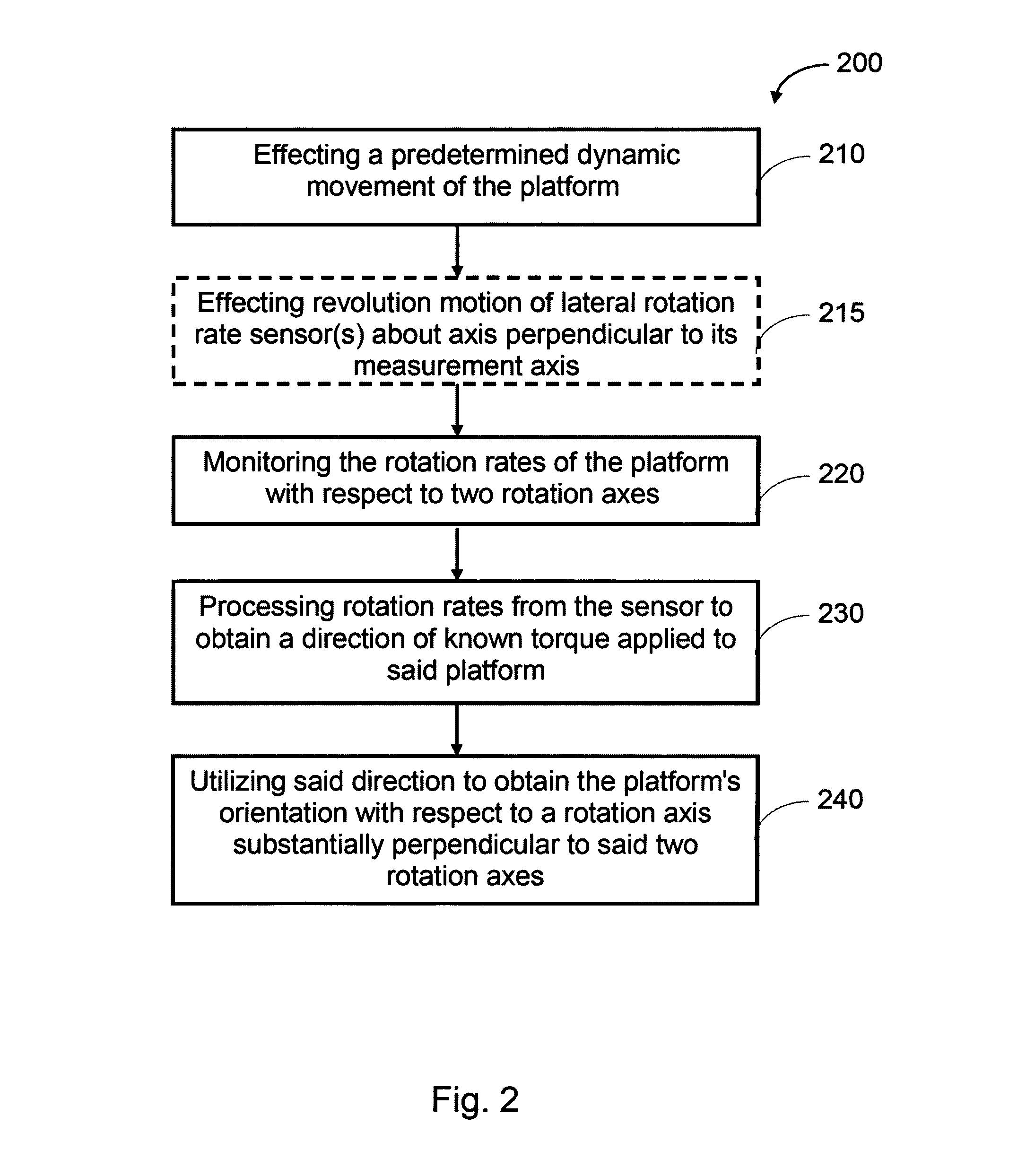System and method for measurement of angular orientation of aerospace platforms
a technology for determining the orientation and positioning of the platform, which is applied in the direction of instruments, instruments, instruments for force/torque/work measurement, etc., can solve the problems of affecting the measurement accuracy of the platform, the inability to implement an ahrs or ins with these types of rate gyros, and the accumulation of bias measurement errors. substantial, the effect of affecting the accuracy of the measuremen
- Summary
- Abstract
- Description
- Claims
- Application Information
AI Technical Summary
Benefits of technology
Problems solved by technology
Method used
Image
Examples
Embodiment Construction
[0072]Reference is made now to FIGS. 1A and 1B, exemplifying the principles of the determination of a platform's orientation according to the present invention. FIG. 1A shows how these are implemented during a gravity turn motion of the aerospace platform; and FIG. 1B is a similar illustration during a satellite's controlled motion. To facilitate understanding, the same reference numbers are used to identify features common in all the examples described below.
[0073]FIG. 1A exemplifies the orientation determination technique of the present invention and how this is carried out during a ballistic motion of an aerial platform P (constituting an aerospace platform). Every stable airborne platform exhibits the gravity turn effect while in a free falling motion. The gravity turn effect acts on the aerial platform P, which moves along a ballistic trajectory T, affecting a predetermined dynamic motion of the platform. The predetermined dynamic motion, in this case, is characterized in that ...
PUM
 Login to View More
Login to View More Abstract
Description
Claims
Application Information
 Login to View More
Login to View More - R&D
- Intellectual Property
- Life Sciences
- Materials
- Tech Scout
- Unparalleled Data Quality
- Higher Quality Content
- 60% Fewer Hallucinations
Browse by: Latest US Patents, China's latest patents, Technical Efficacy Thesaurus, Application Domain, Technology Topic, Popular Technical Reports.
© 2025 PatSnap. All rights reserved.Legal|Privacy policy|Modern Slavery Act Transparency Statement|Sitemap|About US| Contact US: help@patsnap.com



